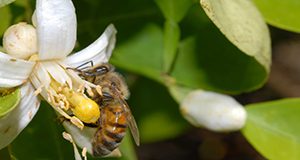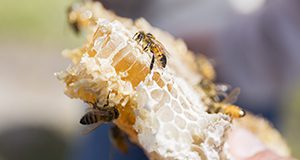Climate, plant communities, and timing of floral resources differ significantly between north, central, and south Florida. While many plants are acceptable pollen producers for honey bees, fewer yield enough nectar to produce a surplus honey crop. The tables in this 12-page fact sheet written by Mary Christine Bammer, William H Kern, and Jamie D. Ellis and published by the UF/IFAS Entomology and Nematology Department list the nectar-bearing plants that are present to some degree in each region and the bloom times for each plant.
http://edis.ifas.ufl.edu/in1223
Tag: Jamie D. Ellis
Wax Moth Control
The greater wax moth (Galleria mellonella Linnaeus) and lesser wax moth (Achroia grisella Fabricius) are major pests of honey bee colonies in Florida. The best defense against wax moths in living colonies is keeping colonies otherwise strong, free of diseases and pests, and queenright. Controlling wax moths in stored combs and equipment, however, can be more difficult. This 3-page fact sheet written by Cameron J. Jack and Jamie D. Ellis and published by the UF/IFAS Department of Entomology and Nematology details the steps beekeepers can take to control wax moths and keep them from ruining stored honey bee combs and equipment.
http://edis.ifas.ufl.edu/aa141
Keeping Bees in Florida
As of June 2016, there are over 4,000 registered beekeepers in the state of Florida and 440,000 managed colonies. According to the USDA, 2012 Florida beekeepers produced over 11 million pounds of honey. The average winter colony loss in Florida as reported by the Bee Informed Partnership Management Survey was the third lowest rate across the nation with only Hawaii and Texas reporting lower colony losses in that time period. This 4-page fact sheet written by Tomas A. Bustamante, Jamie D. Ellis, and Mary Bammer and published by the UF Department of Entomology and Nematology gives an overview of what makes Florida a unique state in which to keep honey bees. It explains the ins and outs of beekeeping in Florida, with descriptions of some of the hazards, a few of the important nectar-producing plants, special considerations for seasonal colony growth and management, and Florida beekeeping regulations.
http://edis.ifas.ufl.edu/aa264


